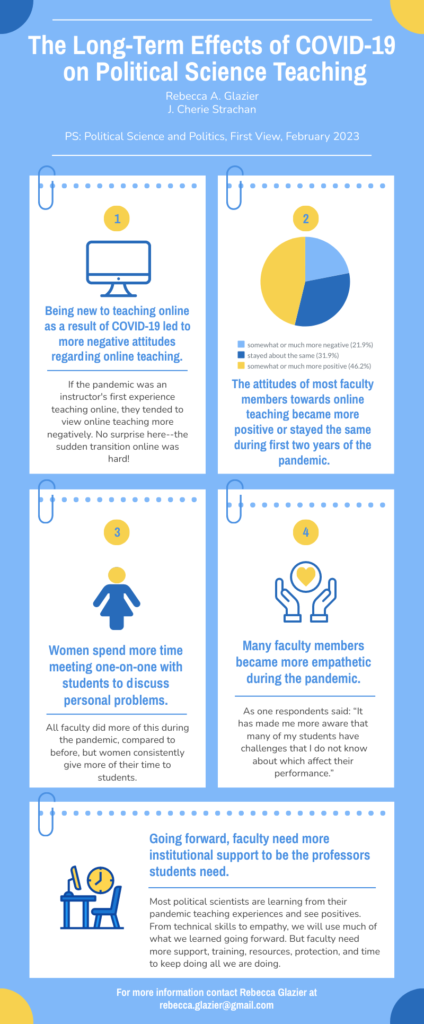I am about to depart for the 2023 Teaching and Learning Conference of the American Political Science Association, which I have the great pleasure of co-chairing with Young-Im Lee of California State University-Sacramento. The theme this year is “Re-Energizing Political Science Education: Innovations and New Opportunities.” As we start to feel like the crisis period of the pandemic is over, many of us are also ready to start feeling re-energized when it comes to teaching and learning! The TLC has a great track format that allows people to really connect with one another and get deep into teaching topics that they care about—from civic education to simulations. I have found this format to be really engaging and energizing in the past.
On Friday morning, I am going to be teaching a short course on “Centering Student Connection.” All of my pedagogical research, culminating in my book “Connecting in the Online Classroom: Building Rapport between Teachers and Students” demonstrates how important it is to create connected, rapport-filled classrooms. At a time when we are all feeling a big disengaged, I am going to focus on how connecting with students is actually mutually beneficial. In a high-rapport class where students feel connected to each other and to the professor, everyone has a better teaching and learning experience. Think about your best teaching days—simulations run without a hitch, students ask thoughtful questions, discussions are rapid-fire and engaging. Everyone enjoys being in class on those days. Those days are more likely to happen when students feel cared about and connected.
Research I just published with Cherie Strachan in PS: Political Science and Politics shows that during the pandemic, all political science faculty members did more one-on-one connecting with individual students, but that women continue to carry more of this load. Our students want to connect with us—even more during challenging times—but we have to be aware of our limited resources as faculty. If we are going to be able to prioritize connection in the way that the research shows is best for our students, our retention rates, our classrooms, and our institutions, we are going to need more support.

I am excited to share these ideas in at APSA TLC in Baltimore and to be energized by the ideas of others. But the rubber will really hit the road when we return home to our institutions and bring our new energy back to our classes. These ideas and energy will undoubtedly benefit our students, but they can likely be maintained for only so long without broader institutional commitments to faculty and student support.